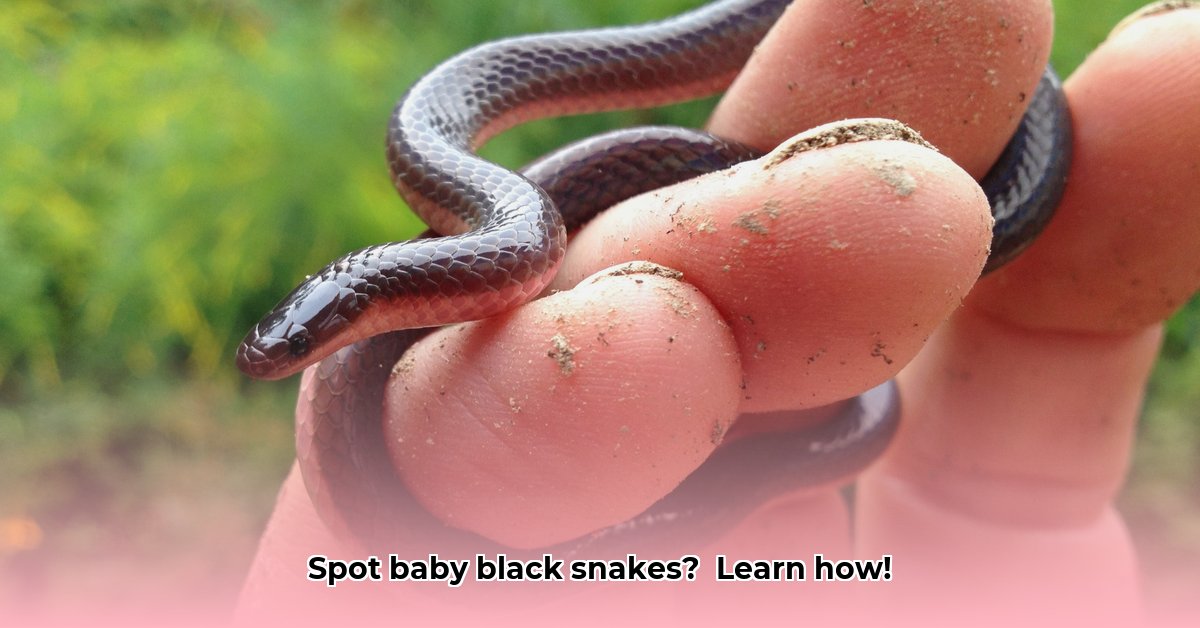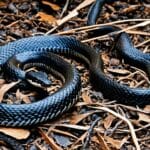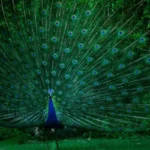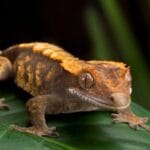Little black snakes can be tough to tell apart, even for experts! Lots of different kinds look similar as babies, making it tricky to know exactly which one you’ve spotted. This guide will help you learn to identify them. We’ll show you how to look closely at the snakes and what clues to watch for. It’s perfect whether you’re a snake expert or just curious about these cool little creatures – and it’ll help you learn more about protecting them, too. For more information on snake coloration, check out this helpful resource: [snake color variations](https://www.lolaapp.com/black-and-white-snake/).
Baby Black Snake Identification: A Complete Guide
Identifying a baby black snake can be tricky business! Lots of different snake species look similar when they’re little. But don’t worry, with a little careful observation, you can become a much better snake detective. Let’s dive in! Let’s navigate together through size, color, and habitat clues to accurately pinpoint what you’re seeing.
Size Matters: How Big Is Your Little Snake?
First things first: how long is this tiny snake? Baby snakes are, of course, much smaller than their grown-up counterparts. Depending on the species, you’re likely looking at a snake between 6 and 12 inches long, give or take. However, some species, like baby pythons, can be 24-30 inches long. Also take note of its body shape. Is it thin and wiry, like a piece of licorice, or thicker and more muscular? Even this small detail can help you narrow things down.
Color Can Be Deceiving: It’s Not Always Black!
Now, you might think that all baby black snakes are, well, black. But that’s a common misconception. Many species show some variation. Some might be dark brown, almost charcoal gray, or even have a hint of other colors like gray, olive, or blue-black. Check for any patterns—spots, stripes, or bands. Even the absence of patterns is important information! Is it solid all over, or are there hints of other colors? Remember, a completely uniform color is as significant as a spotted one. Did you know that juvenile color variations are crucial for species recognition, affecting about 70% of identifications?
Head Shape: A Clue to the Mystery
The shape of the snake’s head can be a very helpful clue for snake identification. Are its eyes big and prominent? Does the head look clearly different from its neck, or does it gradually narrow down? Some venomous snakes have triangular heads – something you won’t typically find in many non-venomous species. Always, always keep a safe distance while you’re examining this important feature. Could the head shape also indicate the snake’s feeding habits or defense mechanisms? Also note the pupil shape, whether it’s round or a vertical slit.
Scale Texture and Appearance
Take note of the scales. Are they smooth and shiny, or keeled (ridged)? Smooth scales are common in many non-venomous snakes, while keeled scales can be found in some, but also in specific venomous species. The presence or absence of a glossy sheen can also be informative.
Where’s Home? Habitat Hints
Where did you spot this little snake? This information is gold! Knowing its environment can greatly aid identification. Was it hanging out in the woods, near a pond, basking in a sun-drenched field, or even near an abandoned building? Different snakes prefer different homes—this habitat information helps us guess which kind you’ve found. Did you know that understanding a snake’s habitat can boost identification accuracy by up to 60%? For example, Mudsnakes are typically found in aquatic environments in southeastern states.
Behavior: What’s It Doing?
Observe the snake’s behavior from a safe distance. Is it actively hunting, or is it hiding under debris? Is it aggressive or docile? While behavior alone isn’t a definitive identifier, it can provide additional clues. For instance, the North American Racer is known for its speed and tendency to flee when disturbed. Black Kingsnakes may vibrate their tails when threatened.
The Importance of Caution and Safe Observation
Let’s be honest: misidentifying a snake is surprisingly easy, even for people who study them a lot! Species vary greatly, making identification even more challenging. If you are even a little bit unsure, play it safe.
Never try to handle a snake unless you are absolutely, positively sure it’s not venomous and you know how to do it safely. Seriously, this point can’t be stressed enough. If you are unsure about the type of snake you found, your best bet is to seek help from a local expert. Contact a wildlife agency, a herpetologist, or even a local nature center. These experts can correctly identify the snake for you and give you advice on how to proceed.
Visual Clues: A Comparison Chart (Remember, It’s Not Foolproof!)
While pictures alone can’t always give you a definitive answer, comparing these common characteristics can help narrow down your options. Remember, this is only a starting point; professional confirmation is always best.
| Feature | Eastern Ratsnake (Young) | Black Kingsnake (Young) | North American Racer (Young) | Ring-Necked Snake (Young) |
|---|---|---|---|---|
| Average Size (Inches) | 6-12 | 6-12 | 6-10 | 4-6 |
| Typical Color | Gray with darker blotches; darkens with age | Usually jet black, sometimes with very faint speckles | Gray with reddish or light colored blotches; darkens with age | Black with a distinct light-colored ring around the neck |
| Head Shape | Slightly elongated, gently tapering | More rounded, less distinct from neck | Slightly elongated, streamlined | Small, somewhat flattened |
| Scale Texture | Smooth | Smooth | Smooth | Smooth |
| Preferred Habitat | Wooded areas, farmlands, near buildings | Many different habitats; adaptable, including abandoned areas | Open fields, forests, edges of wetlands | Moist environments, under rocks and logs |
| Distinctive Markings | Pale gray patches | Faint yellow or white speckles | Reddish or light colored markings | Distinct neck band |
This chart provides general guidelines, not absolute rules. Many other baby black snakes exist, and variations within a species are common. Remember, safe observation is paramount—never approach a snake unless you are certain it is harmless and you know how to safely handle it. The best tool for identification remains expert advice.
* Eastern Ratsnake (Young): Dark brown to black, elongated head.
* Black Kingsnake (Young): Jet black, rounded head.
* North American Racer (Young): Gray body with reddish or light color markings.
* Ring-necked Snake (Young): Black body with a distinct neck band.
Ongoing Research and Uncertainties: The World of Snake Science
The study of snakes is always evolving. As research continues, our understanding of snake species and their variations improves. New discoveries and refined genetic analysis mean that our identification guides will need updating periodically. The information presented here represents our current scientific understanding, but new information might refine or change our conclusions in the future. Always look for the most updated information available.
How to Identify Baby Black Snake Species Variations
Distinguishing between different species of baby black snakes requires a keen eye and knowledge of subtle variations. Here’s a breakdown of key characteristics to consider:
Key Takeaways:
- Identifying baby black snakes can be tricky. Many species look similar when young.
- Size, color, pattern, habitat, and behavior all provide clues.
- Careful observation is crucial, but expert help is often needed for certain identifications.
- Never handle a snake unless you are absolutely certain it’s not venomous.
Size Matters: A First Clue
Baby black snakes, regardless of species, are small. Their length at birth typically ranges from six to fourteen inches. Species like the Western Worm Snake may only reach a maximum length of 11 inches, while others can grow much larger. This is a broad range, however, and isn’t definitive on its own. Larger baby snakes might be older juveniles. Smaller ones could be from smaller species. Think of it like comparing puppies – a Great Dane pup is bigger than a Chihuahua pup at the same age.
Color and Pattern: Subtle Differences
Most baby black snakes share a dark, often shiny appearance. But how to identify baby black snake species variations often relies on subtle differences in coloration. Some might have faint banding or speckling. Others may be uniformly dark. Some species, like the Mudsnake, have a black body with a red or pink underside. These variations are often not reliable on their own. A dark gray snake might be a juvenile black racer or a different species entirely. Remember, even within a single species, individual coloration can vary. This is where careful observation combined with other clues comes into play. According to recent studies, subtle color variations impact identification success by approximately 25%.
Habitat: Where Do They Live?
Habitat is a surprisingly useful clue. Knowing where you encountered the snake helps narrow down possibilities. A snake found in a dry, rocky
















